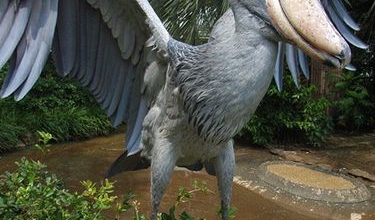There are no Great White Sharks in the Persian Gulf, and shark attacks in general are extremely rare. However, there are some species that maybe aren’t quite as friendly as you’d think, so it’s important to know who’s who down there.
There are more than 30 different species of shark off the coast of the UAE, some are rare, some not so much. If you ever encounter a shark, then it is best to leave them alone.
Here’s our guide to 5 familiar species that are known to exist in the Arabian Gulf
Tiger Shark
Risk to humans: Very high
Usually found in: Deeper waters offshore, rarely inshore
Approximate length: 5.5 metres
The tiger shark is a macro predator, capable of reaching a length of more than five metres. They can be found tropical and temperate waters, like the Persian Gulf. It is called a tiger shark because of the dark stripes down its body, which resemble a tiger’s pattern but fade as the shark matures.
The tiger shark is a solitary, mostly nocturnal hunter and is notable for having the widest food spectrum of all sharks, with a range of prey that includes fish, seals, birds, squid, turtles, sea snakes, dolphins, and even other smaller sharks.
It also has a reputation as a ‘garbage eater’, because it consumes a variety of man-made objects that linger in its stomach. This is one shark you want to avoid if you spot while swimming.

Whale Shark
Risk to humans:Low
Usually found in: Open waters offshore, rarely inshore
Approximate length: 9 metres
Whale sharks are harmless sea-creatures that filter-feed plankton and other small fish. They are typically found in warm, shallow waters, making the Arabian Gulf and Gulf of Oman suitable habitats.
They make for common encounters for divers off the Omani coast. Typically growing up to eight metres long, the biggest whale shark recorded measured 12.6 metres long and weighed a hefty 21 tonnes.

Sicklefin Lemon Shark
Risk tohumans: High
Usually found in: Open and coastal waters
Approximate length: 3.5 metres
Sicklefin lemon sharks are often found in tropical waters. This large species grows up to 3.5 metres long and generally lives in water less than 92 metres deep.
This one is a slow-moving predator feeding mainly on bony fishes and rarely travels long distances. They are known to respond aggressively to any provocation from humans.

Tawny nurse sharks
Risk to humans: Low
Usually found in: Inshore and sandy flat seabed
Approximate length: 3 metres
The tawny nurse shark is a species of ‘carpet’ shark, because it swims very low in shallow water. It prefers reefs and sandy flats. The maximum recorded length of the tawny nurse shark is 3.2 metres.
It tends to spend the day resting inside caves or under ledges. At night, it is an active-swimming predator that uses a powerful suction force to pull prey from inside holes and crevices.

Sandbar shark
Risk to humans: Low
Usually found: Off coastal areas
Approximate length: 2.4 metres
The sandbar shark is also called the thick skin shark or brown shark. It is one of the biggest coastal sharks in the world. Females can grow up to 2.5 metres.
The sandbar shark, true to its nickname, is commonly found over muddy or sandy bottoms in shallow coastal water. The shark itself preys on fish, rays, and crabs.
Despite its large size and similar appearance to other dangerous sharks such as bull sharks, there are very few, if any attacks attributed to sandbar sharks and so they are considered not to be dangerous to people. As a result, they are one of the safest sharks to swim with and are popular sharks for aquariums.







Where do you mean by Arabian gulf?! If you are writing Arabian gulf instead of Persian gulf, please correct this. The gulf’s official name has been always Persian Gulf for thousands years. There is no Arabian gulf !
Thanks.
Eva
Thanks Eva.
I’m from Saudi Arabia are there sharks in the Arabian sea